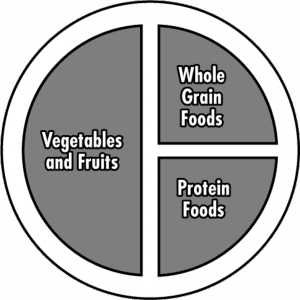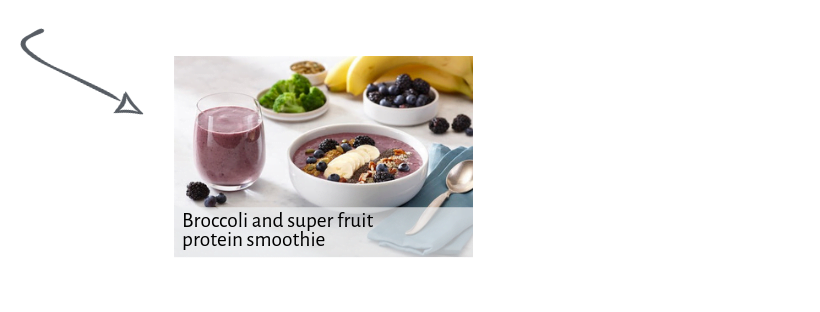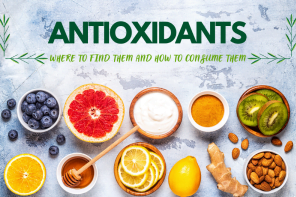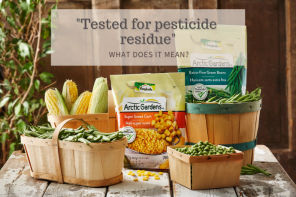Did you know that the first version of Canada’s Food Guide appeared in 1942 in the middle of the second World War? At the time, the reason for creating this kind of guide was to ensure the effectiveness of soldiers, war workers and mothers. Today, it’s more of a tool that Canadians can refer to for a balanced diet.
After more than 25 years without major changes, the 9th version of Canada’s Food Guide was unveiled on January 22. While the last version dated from 1992, a slight update was made in 2007.
Where can you get the food guide?
Highly anticipated by nutritionists and health professionals among others, the guide is now available on the Government of Canada website.

What should be learned from the new food guide?
At first glance, despite its simplicity, the new food guide can seem complex to understand and incorporate because little information is provided. In this article, you’ll find all the necessary information to apply the guide to your food habits.
Good bye food groups and serving sizes, hello proportions
In the old version of the guide, Health Canada classified various foods into distinct food groups:
- fruits and vegetables
- bread and cereal
- milk and milk products
- meat and alternatives
It also recommended consuming a certain number of servings of each group according to age and gender.
The new version gives general recommendations instead of emphasizing serving sizes and some food in particular. Therefore, the new design corresponds to ideal proportions that each food should make up in your plate:
- ½ fruits and vegetables
- ¼ protein
- ¼ whole grains
To help you respect this new way, Health Canada suggests that you use the Eat Well Plate to prepare your meals and snacks.

A diet composed of 50% fruits and vegetables
Fruits and vegetables should be at the core of your plate. That’s what the new guide says. Vegetables and fruits are an integral part of healthy eating habits and eating a variety of them is beneficial to your health. Some fruits and vegetables would even be functional food, meaning they’ve got medicinal virtues. It’s important to include a large quantity of fruits and vegetables in your diet as they contain important nutrients like fibre, minerals and vitamins.
Fruits and vegetables come in many forms: fresh, frozen and in cans. They also come in many different textures and colours to satisfy all tastes. For some people, incorporating vegetables into their diet is a significant challenge. To help, nutritionist Hubert Cormier unveils 20 tricks for eating more veggies.
 |  |
Plant proteins in the spotlight
Canada’s new food guide also recommends consuming plant proteins like legumes, nuts, grains and tofu more regularly than animal proteins like milk, eggs and meat. Contrary to what we used to believe, you don’t need to eat large amounts of protein to meet your nutritional needs. As mentioned earlier, a quarter of the plate is enough to meet your protein needs. Nevertheless, a shift towards plant proteins is still advised because they provide more fibre and less saturated fats than other kinds of protein.
Read of our article on plant proteins to learn more.
 Rethink the way you eat
Rethink the way you eat
“Eat well. Live well.” That’s the new slogan for Canada’s Food Guide. For the first time, Health Canada addresses factors other than food itself. Now it’s also a question of rethinking the way you eat your meals, your eating habits. This new vision is also illustrated by the following sentence:
“A healthy diet is much more than the food you eat.”
The guide suggests, for example, to be conscious of your eating habits. It’s about taking the time to eat and noticing when you’re hungry and when you’re eating just for the sake of eating. It’s also being conscious of what you eat, when you eat, why you eat, that type of thing. Just being aware of your habits allows you to make healthier choices. The guide also suggests you enjoy your food and eat meals with other people to reconnect with the aspect of eating for pleasure. Visit the Government of Canada’s website for all the advice.
5 tips to adopt the food guide
While it’s important to understand the new food guide properly, it’s even more important to be able to integrate the advice provided into your eating habits. Here are 5 tips to help you apply Health Canada’s recommendations.
1. Discover plant proteins
There are many options available regarding plant proteins and discovering them can help you integrate the food guide’s recommendations more easily to your diet. There’s been a growing interest in plant proteins, especially legumes. Although they’re not well known, there are lots of benefits to including them in your diet because, as well as being delicious, they’re excellent for your health. When we talk about legumes, we’re referring to:
- red, green or brown lentils
- chick peas
- several varieties of beans like black and red kidney beans
- and much more
As you can see, there really are countless possibilities in the recipes we propose below.
Among others, sources of plant proteins include:
- nuts
- tofu
- tempeh
- seeds (chia, pumpkin, hemp, flax, etc.)
Once you’re a plant protein pro, integrating them into your meals will quickly become part of the fun! In fact, discover 5 protein foods to incorporate into your dishes.
2. Prepare meals ahead of time
 With the pace of life today, not having enough time is often an obstacle to good nutrition. Often coming home from work, you don’t have enough time or motivation to make dinner, so you end up eating prepared meals that have too much fat, sugar or salt.
With the pace of life today, not having enough time is often an obstacle to good nutrition. Often coming home from work, you don’t have enough time or motivation to make dinner, so you end up eating prepared meals that have too much fat, sugar or salt.
That’s why meal prep – preparing meals in advance – is a good way to save time. For example, you can spend half a day a week, like Sunday afternoon, preparing all your meals for the upcoming week. That way, you’ll have more time to make complete recipes that respect the guide without spending two hours in the kitchen every night. It’s win-win: the best meals for your health and more time to relax on weeknights. To help you out, we’ve found 2 techniques for preparing meals in advance.
 3. Take time to eat breakfast
3. Take time to eat breakfast
Just like on weeknights, weekday mornings are often rushed. Even though many people skip breakfast, it’s important to take the time to eat in the morning to start the day on the right foot. The body needs energy to get through the whole day, so taking time for a good breakfast in the morning is crucial.
Unfortunately, peanut butter and toast doesn’t have enough nutrients to make a complete breakfast. A good breakfast should respect the proportions recommended in the new food guide: ½ the plate should be made up of fruits, ¼ proteins and another ¼ whole grains. A smoothie, for example, could be a good, quick and simple way to get a healthy breakfast in the morning. Our broccoli and super fruit protein smoothie contains all the necessary ingredients for a complete breakfast.
 4. Cook as much as possible
4. Cook as much as possible
Preparing your meals yourself will make you more aware of what you’re putting on your plate and allow you to personalize recipes to your own taste. As the guide recommends, avoid eating ultra-processed meals and food which you’ll be able to do if you cook as much as possible. Adding fresh fruits and veggies to your recipes will make all the difference in the world. Plus, cooking can be simple and easy. If you’re not great at meal prep, you can still plan what you’re going to eat the upcoming week and that way, buy only the necessary ingredients. And you’ll save on the grocery bill.
But sometimes you have to eat on the go and that’s when it can be tricky to eat healthy. There are, however, some healthy solutions like Arctic Gardens’ Veg•e protein blends. They can be enjoyed as a main or side with a healthy serving of fruits and veggies.
You can also read our article, “Our inspiration for eating healthy when you’re in a rush”. There, you’ll find quick and delicious recipe ideas for busy weeknight meals.
 |  |
5. Read product labels
The food guide recommends limiting your consumption of foods that are high in sodium, sugar and saturated fats. That’s why it’s essential to know how to decipher nutritional labels on products before putting them in your shopping cart.
Highly-processed food is widely available and consuming them too often increases your sodium, sugar and saturated fats intake which can increase your risk of chronic diseases. Reading product labels allows you to compare and choose the healthiest food. It’s a good habit to develop because not only will you know how many nutrients a product contains (like sodium, sugar and fat), but also what ingredients are in the product.
In this article, we teach you tricks to understanding food labels.
 Recipe ideas that meet the new food guide recommendations
Recipe ideas that meet the new food guide recommendations
Mexican casserole Californian veggie Buddha bowl

Noodles with vegetables and black beans Veggie spinach jar


Basmati rice with honey and curry chick peas Black pepper tempeh with vegetable stir-fry


Vegetable fried rice omelette Barley and chick pea bowl with apples and maple


Vegetable couscous Thai tofu soup by Alex Cuisine (French only)


Tex-Mex veggie rice bowl Stuffed peppers with couscous, dried fruit and almonds


For even more inspiration, the Canada’s Food Guide site also provides recipes that follow the suggested proportions.
Finally, you should remember that Canada’s Food Guide is there to help you in your daily nutritional choices and you’re in no way obligated to follow Health Canada’s recommendations. But we do believe that your body deserves the best and that starts with healthy eating habits.
For even more information about Canada’s new food guide, visit Foundation Louis Bonduelle’s website for an analysis by Catherine Lefebvre, nutritionist.
So, do you think you’ll follow these recommendations?









